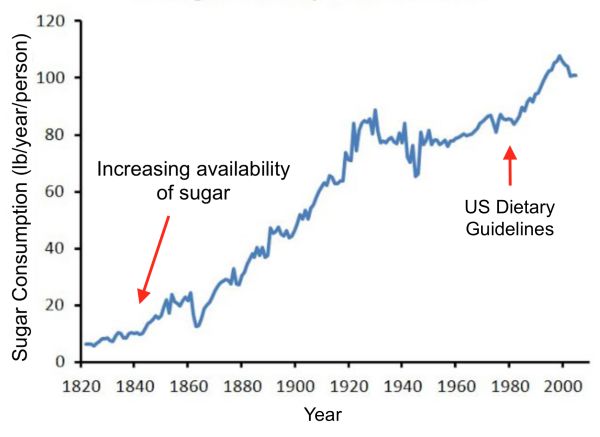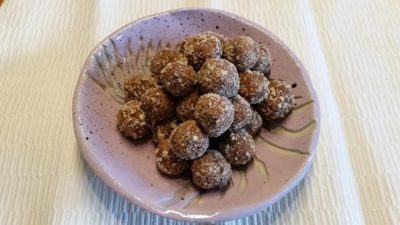Have you ever found yourself saying “that’s enough, we need to start eating better and healthier”? Some of us have had many of those moments over the years, but soon realized that sticking to our choices is not an easy job.
First of all, knowing what is good for us requires time. Time to read, talk to our knowledgeable friends, read some more, filter through contradictory information about different kinds of food, and finally take a decision about what our family’s diet should look like. Then comes the tricky part: finding those healthier choices in the supermarket, drowned in a sea of highly-processed food with shiny promises of health and happiness. Last, we have the social pressure… after all, who wants to be the only parent in town serving low-sugar cakes and fruits for a birthday party?
One of the worst culprits in our unhealthy diets is sugar. The aim of this blog is to help us find a path to a healthier lifestyle, and one of the best ways to start is by addressing our sugar consumption.
Why do we have a “sweet tooth”?
The human brain is highly responsive to the sweetness available in the environment because, back when our early ancestors were hunting and gathering their food in a sparse environment, any and all extra calories were welcome. And still, up until the 19th century humans managed to create amazing art, literature, and engineering while consuming very little sugar (Fig. 1). Only two hundred years later, 75% of packaged food has added sweeteners disguised under many unfamiliar names (Ref. 1). We still have that ancient craving for sweetness, and our metabolism and brain haven’t evolved fast enough to deal with all the excess sugar. Consequently, the negative effect of a high-sugar diet in our bodies is alarming: it reduces the signal for satiation and the physical feeling of fullness, which leads to obesity, induces the release of dopamine, which in turn leads to addiction just as drugs do, affects our liver in the same way that alcohol does, and increases the risk of chronic non-communicable diseases such as heart disease, hypertension, cancer, and type II diabetes (Ref. 2).

Figure 1. US Sugar consumption, 1822-2005.
The consumption of sugar in the US increased after 1820, when plantations spread in the Caribbean and Southern US, but flattened out from 1920 to the mid 70’s. After 1977, when sugar was exonerated from its negative effects on health, the consumption increased again. Source: Whole Health Source.
Let’s do an experiment
In 2014, the Australian actor and director Damon Gameau made an eye-opening documentary entitled That Sugar Film to explore the truth about sugar. Gameau had been living for years on good fats coming from nuts and avocados, proteins from eggs, fish and meat, and carbohydrates from fresh vegetables and fruits. During his two-month experiment, Gameau consumed 40 teaspoons of sugar per day, the average for an Australian man, while maintaining the same calorie intake: 2300 per day. His diet consisted on processed food rich in free or added sugars. Since the goal of the experiment was to unmask the hidden sugars, Gameau chose to eat mainly food advertised as “healthy”: low-fat flavoured yogurt, breakfast cereal, baked beans, and sugary drinks like fruit juice, as well as food with natural sugars, like raisins. Junk food, candy, chocolate, ice-cream, or soft drinks were off his menu. He kept the same exercise routine and was supervised by a team of doctors and nutritionists.
Starting with his first breakfast, Gameau was shocked: a bowl of crunchy cereal with some low-fat yogurt and 400 ml of apple juice added up to 22 grams of sugar. Most of us would eat this in the morning, or give it to our kids, and feel good about such healthy choice. He also noticed that eating two apples, for example, would add 8 teaspoons of sugar to his meal and satisfy his appetite because of all the fibre they contain. But if he drank a glass of freshly-squeezed apple juice, made with 4 apples, he’d be taking 16 teaspoons of sugar and none of the fibre or other beneficial nutrients and antioxidants. Because the fibre in fruit counteracts the noxious effects of the sugar, and because eating two pieces of fruit usually satisfies our appetite, it’s simply better to eat your fruit than to drink it. The thought is somehow baffling: nature makes fruit to give us the right amount of energy and fibre we need, and we turn it into juice, keeping only the sugar and throwing away a big part of the goodness.
In two months Gameau gained 8.5 kg and his waist increased by 10 cm. He developed non-alcoholic fatty liver disease, an abnormal accumulation of fat in the liver that occurs when liver cells make fat out of the carbohydrates not used by your body. Having a fatty liver puts you at risk of developing type II diabetes, cirrhosis, and ultimately liver cancer. Gameau’s level of triglycerides, a type of fat in blood, jumped from 20 below the healthy line, to 20 above, increasing the risk of heart disease and stroke. The scarier part is that all these changes happened while keeping the same calorie intake and consuming food and drinks that were considered healthy. That’s it for clear proof.
When common sense doesn’t apply
Over the last two decades, there have been other documentaries like Gameau’s and plenty of scientific articles showing the disastrous effects of a high-sugar diet. But the power and influence of ruthless companies and their lobbyists are insidious. The global sugar market is worth $66 billion (BCC Research, 2013) and the industry is ready to do everything it can to control our perception of sugar and to stop public policy initiatives aimed at controlling its consumption. After all, sugar is cheap, it tastes delicious, and it sells well.
It was only in the late 1950’s and 60’s that doctors and public health authorities started wondering why heart disease, diabetes and obesity were becoming more and more prevalent. Some theories blamed sugar, some blamed fat. The International Sugar Research Foundation (ISRF), created by the US sugar industry, paid scientists during the 1960’s and 70’s to play down the effect of sugar on diabetes, heart diseases, and tooth decay. Thanks to the ISRF’s campaign, in 1975 sugar was declared as “generally recognized as safe” (GRAS) and saturated fat was promoted as the culprit.
Forty years had to pass until the WHO finally declared, in 2015, that we should reduce sugar intake (Ref. 3). On the meanwhile, obesity rates have doubled worldwide, and the incidence of diabetes has nearly quadrupled. Peace be with you, sugar lobby.
Sweet Revenge
Today, some more enlightened public authorities are beginning to address the problem and limit the damage. The cities of Philadelphia and Berkeley, for instance, have succeeded in imposing taxes on sugary drinks in March 2015 and June 2016 respectively. Since then, the American Beverage Association (ABA) has pumped almost $30 million into anti-tax campaigns only in the Bay Area, where three other cities are working on applying the same tax. The ABA has even hired the same media firm that ran the successful “Brexit” campaign in the United Kingdom to sway public opinion their way. In response, advocates of the initiative to tax on sugary drinks, led by former New York City mayor Mike Bloomberg, are also spending millions of dollars in the Bay Area campaign alone (source: Helena Bottemiller Evich, Politico).
Clearly, like the struggle to ban smoking, the campaign to reduce sugar consumption will be a fight to the bitter end. It can be frustrating to think that, even when science or our own experience tell us that we need to change our diet, policy changes will happen so slowly. But we should not be discouraged. In the 1970s, a grassroots movement initiated in the United States led to smoke-free airline fights, which in turn resulted in more generalized smoking bans in public spaces. As citizens and consumers, we have an immense power that we tend to overlook. Social media have made grassroots campaigning both easier and more effective. By connecting with social communities and by stopping to buy food with added sugar, we can all help drive the message home that these products are dangerous for our health and need to disappear from the supermarkets.
REFERENCES
[1] Ng SW, Slining MM, Popkin BM 2012. Use of caloric and noncaloric sweeteners in US consumer packaged foods, 2005-2009. J Acad Nutr Diet. 112(11):1828-34.
[2] Null G 2014. Sugar: Killing us Sweetly. Staggering Health. Consequences of Sugar on Health of Americans. Global Research 3 February 2014.
[3] WHO Guideline: Sugars intake for adults and children










Interesting reading! Note that I would rather see better education than taking / banning…
I’m glad you enjoyed it. And you are right, education is the best option. Let people decide for themselves what they want to consume. That should force the industry to change what they put into our food. On the meanwhile, money is needed to sponsor educational campaigns. If it comes from a tax on sugary drinks, it is not a bad idea, in my opinion. A bit like the tax on cigarettes and alcohol…